-

the festive flowers of Baeckea virgata
I have been admiring this lovely screening hedge on a busy road for years, always driving by too busy to stop when it is in flower. But at last I made the time to stop and photograph this row of Baeckea virgata in full festive flower last week, I think it rivals NSW Xmas bush…
-

The glossy leafed Eupomatia laurina
This ancient flowering plant has a fossil record of 120 million years, it’s primitive flowers are a legacy from Gondwana. Isn’t that mind blowing!? The perfumed, glossy green tree with edible fruits is the perfect addition to a bush food garden. My Mum’s Eupomatia laurina is flowering and this is the first time we have…
-
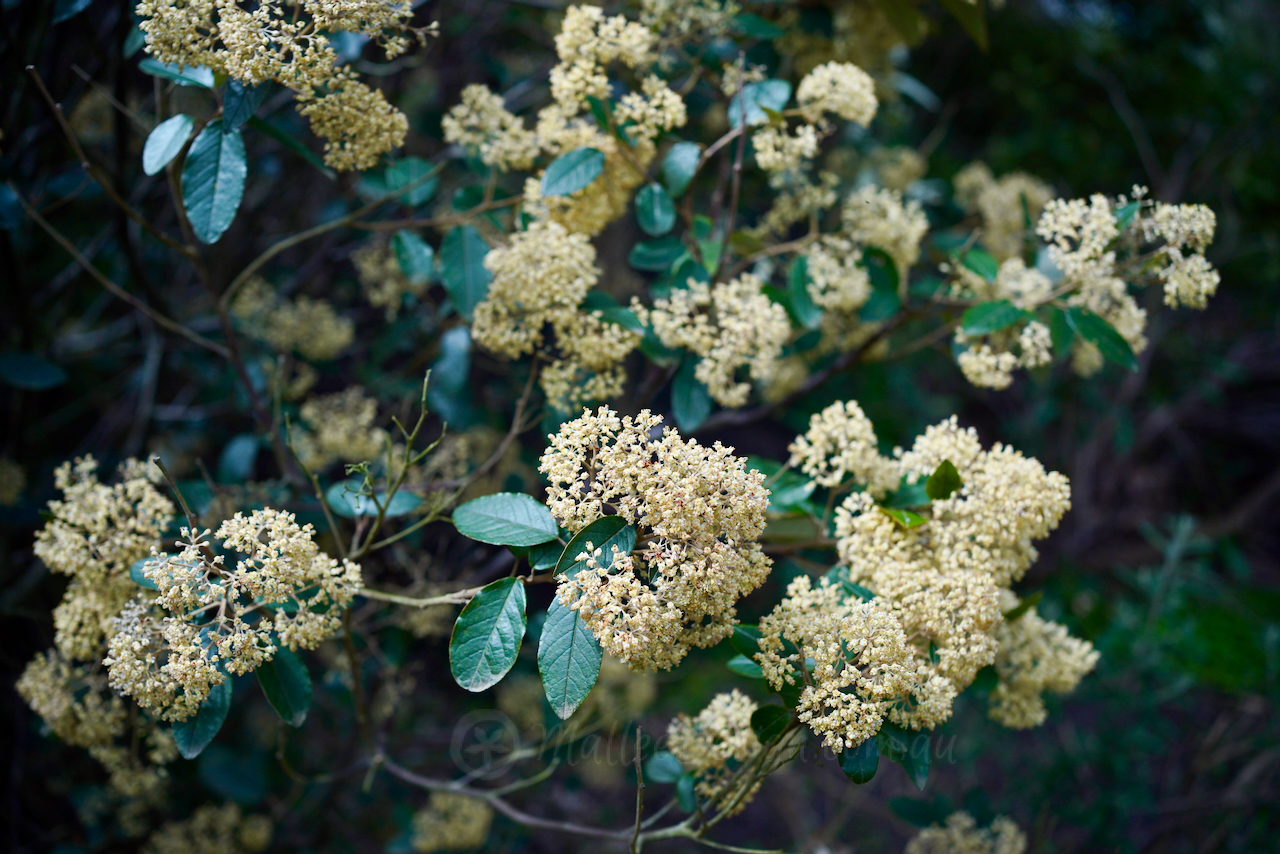
Pomaderris Elliptica: feature screening
After much sleuthing and a little bit of travel I have finally figured out which Pomaderris I saw flowering its head off in Cranbourne Botanical gardens last year. It only took a quick dash around Hobart Botanical Gardens, a few weeks ago, where I spotted it with a label! I am also guilty of planting…
-
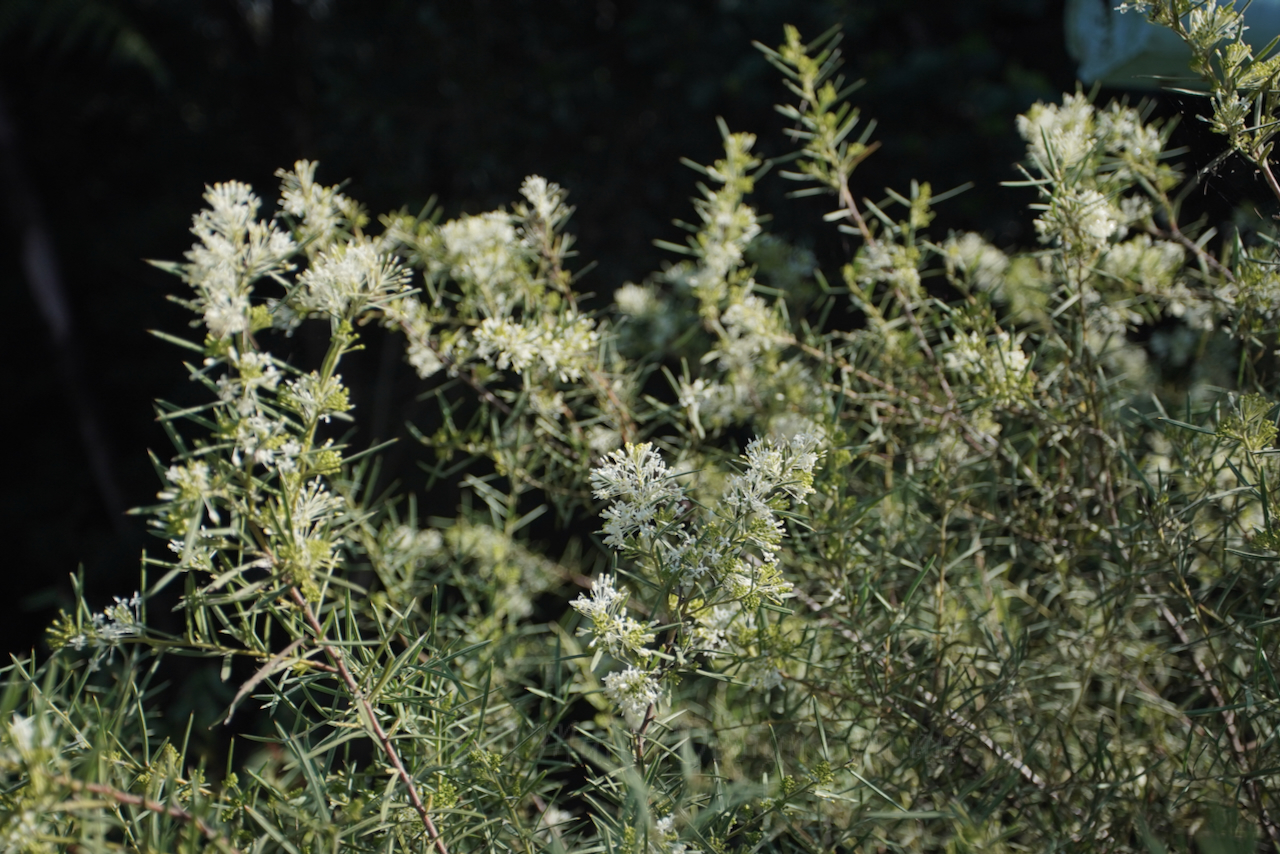
Grevillea anethifolia: Prefectly Prickly
This Grevillea is commonly known as the ‘Spiny Cream Spider Flower’ and is very aptly named. The leaves have needle like points and the whole plant makes a wonderful dense prickly shelter for small birds. These photos were taken in the Illawarra Grevillea Park, I also have a grafted Grevillea anethifolia growing happily in my…
-
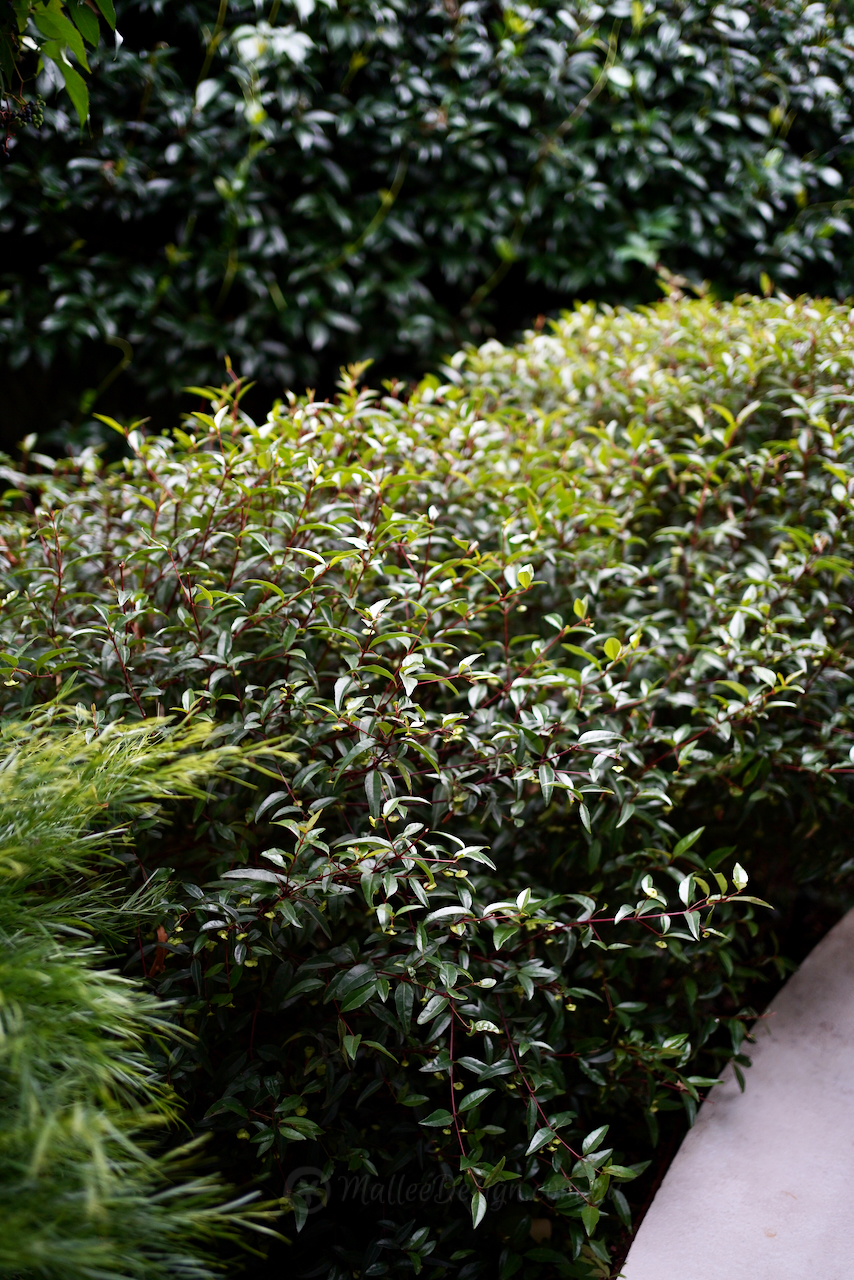
Correa baeuerlenii
Here is another of my very favourite Correas that is such a useful plant in the landscape. Correa baeuerlenii or Chef’s Hat Correa is found naturally growing on the south coast of NSW on shady, damp sites, therefore it grows happily under large trees and will cope with periods of dry and also light frost.
-
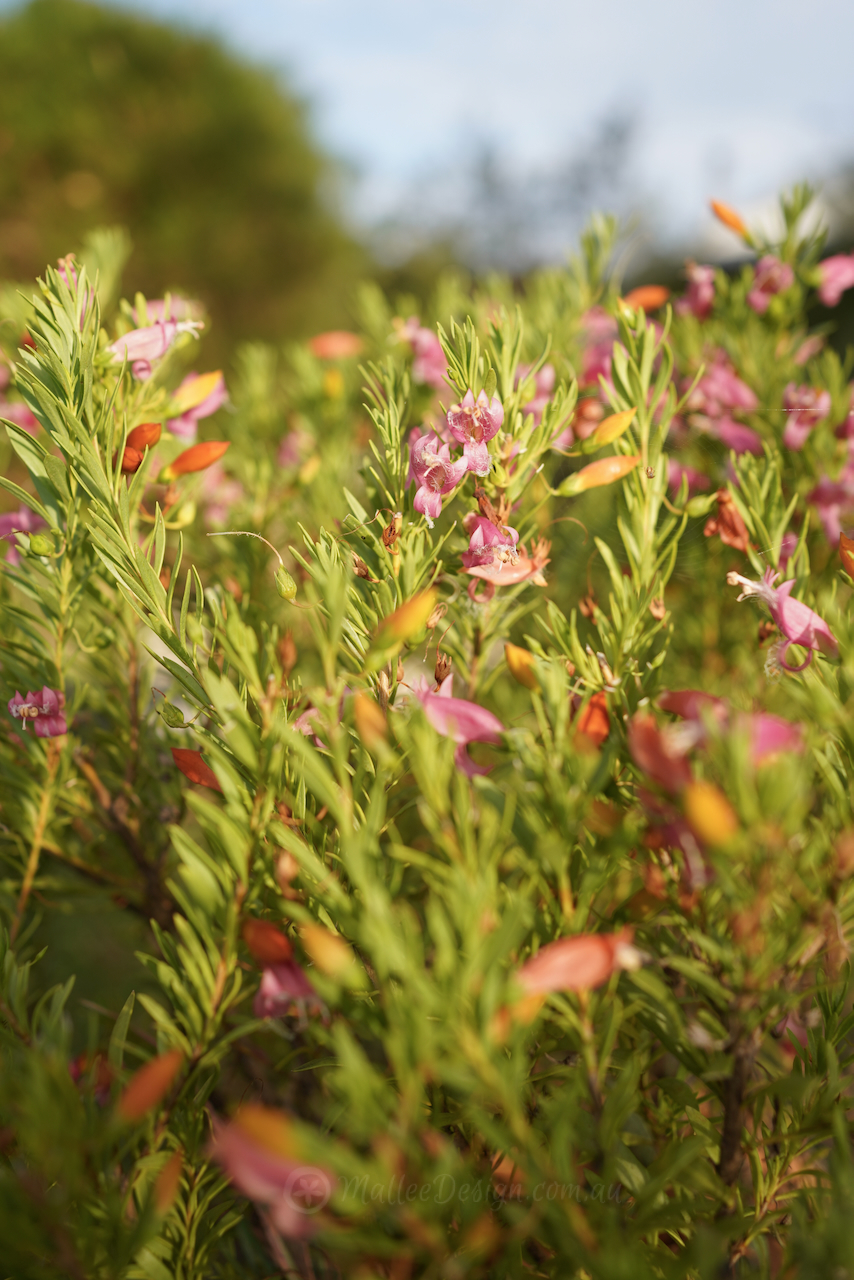
So much Joy: Eremophila racemosa x maculata ‘Fairy Floss’
This Emu bush is always a great performer in a difficult postion, providing so my joy with its multicolured buds and blooms. I have been growing Eremophila ‘Fairy Floss’ for a number of years now and have found it to be particularly tough and hardy. What I didn’t realise was that it is a cross…
-
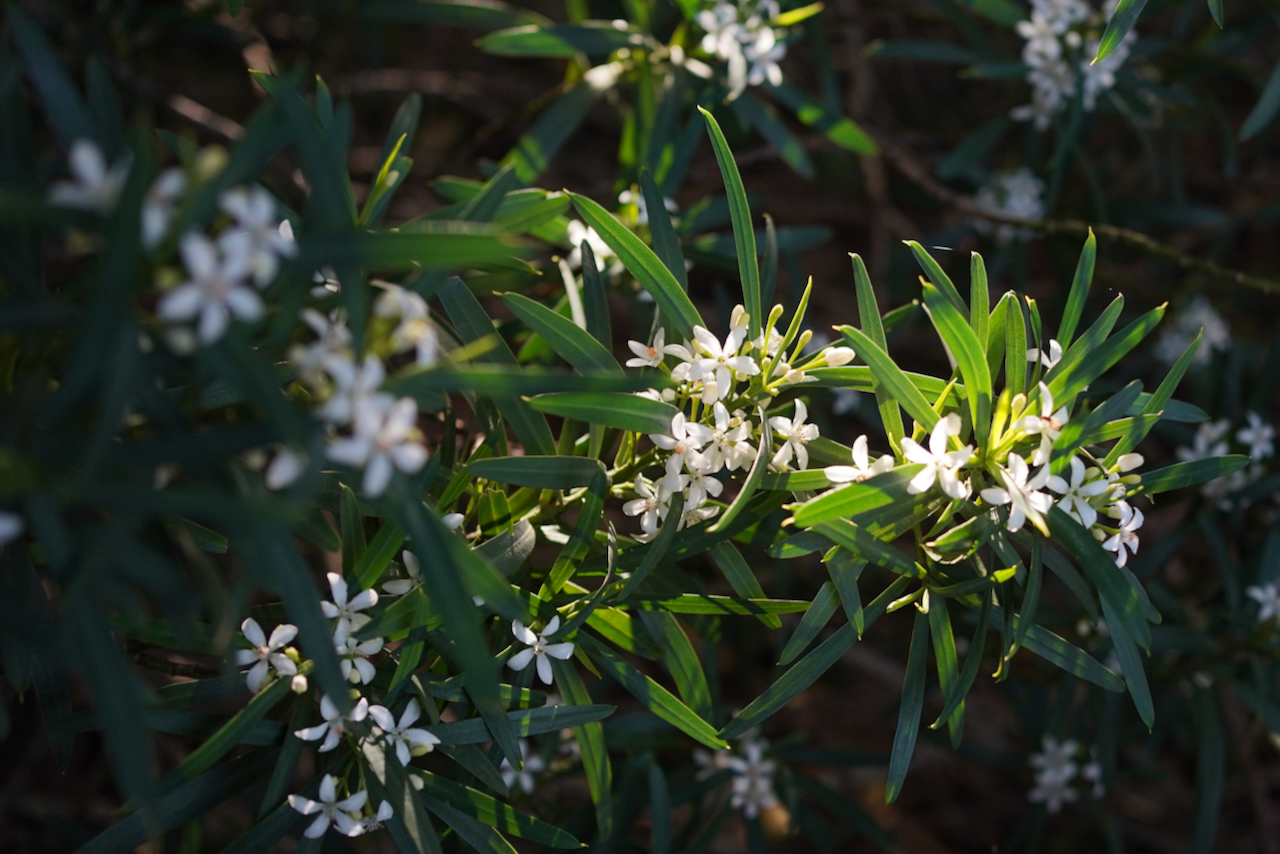
Philotheca myoporoides and it’s many forms
This gorgeous shrub is called Wax Flower or Philotheca, which apparently means “loving receptacle”. And that it is, providing plenty of flowers for pollinators and scent for humans, it is a very hardy species which can handle sun and shade in equal measure. Because of its hardiness it is one of the most widely cultivated…
-
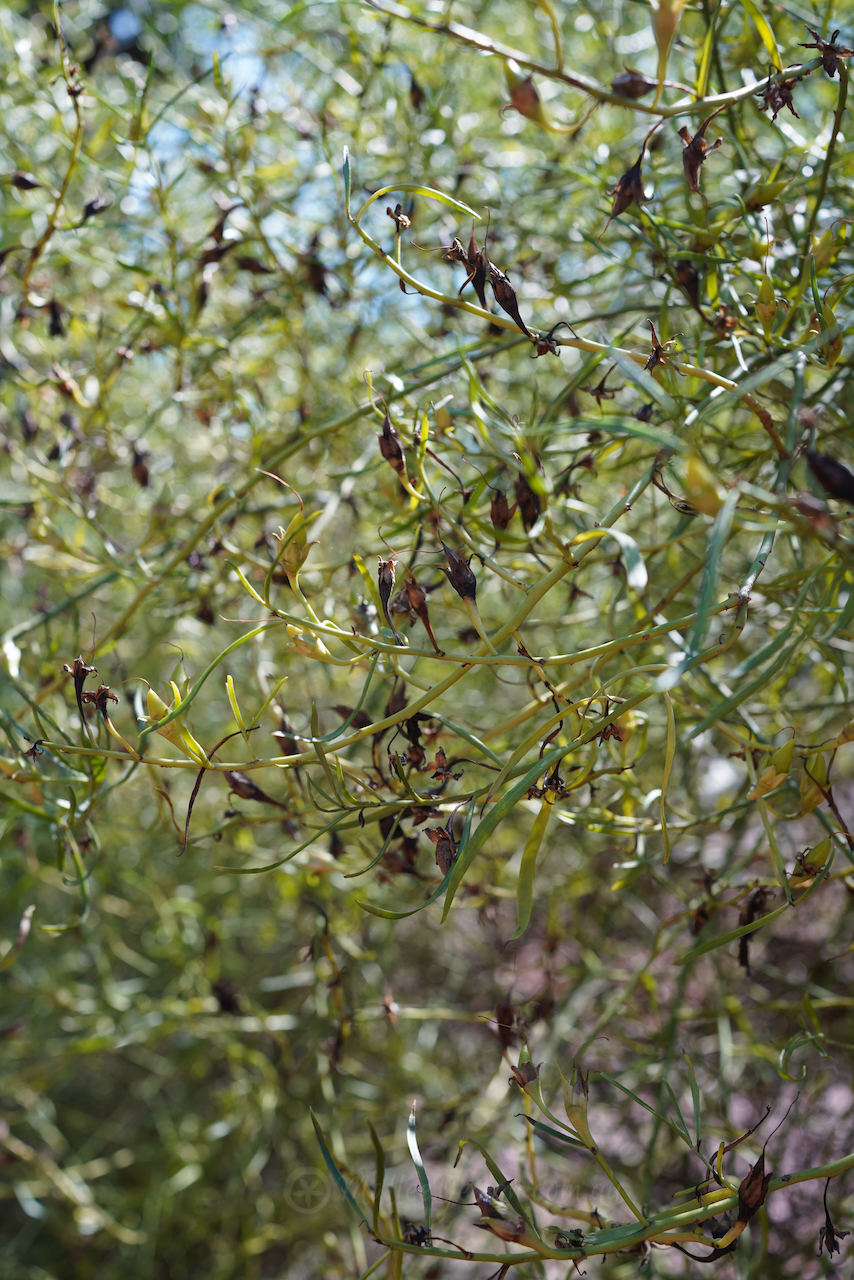
The multifaceted Eremophila Polyclada
This is Twiggy Emu Bush, lives up to its name, this facinating emu bush seems to be showy no matter what stage of flowering it is at. The spent flowers leave behind these showy yellow fruits , and sometimes also left behind is the black remains of the petals, this creates a mix of white,…
-
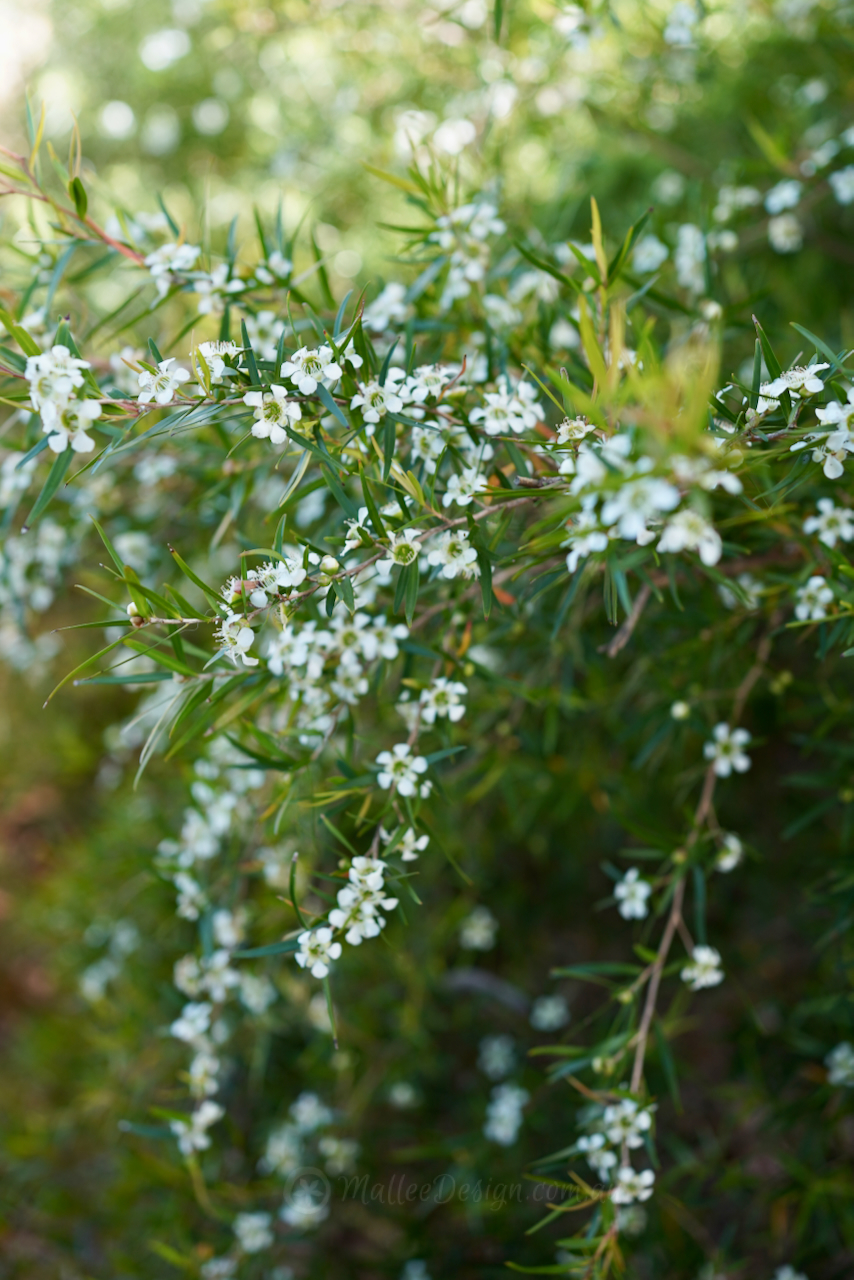
The perfect Scented Screen: Leptospermum ‘Little Lemon Scents’
This dwarf graceful, weeping tea tree is a wonderful addition to any garden, it can be used as a privacy screen, in a mixed hedge or as a soft backdrop in a layered planting. The compact habit of Little Lemon Scents is far smaller growing and more shapely than its parent, Leptospermum petersonii (Lemon-Scented Tea…
-

Hakea ‘Pinball’ for all
This is a grafted form of the very showy Pin Cushion Hakea, Hakea laurina, which hails from south-western WA. This is a wonderful grafted species which means we can now grow these very iconic flowers in areas with higher humidity and a heavier soil, it is actually also a cultivar: Hakea laurina x petiolaris. I…
-
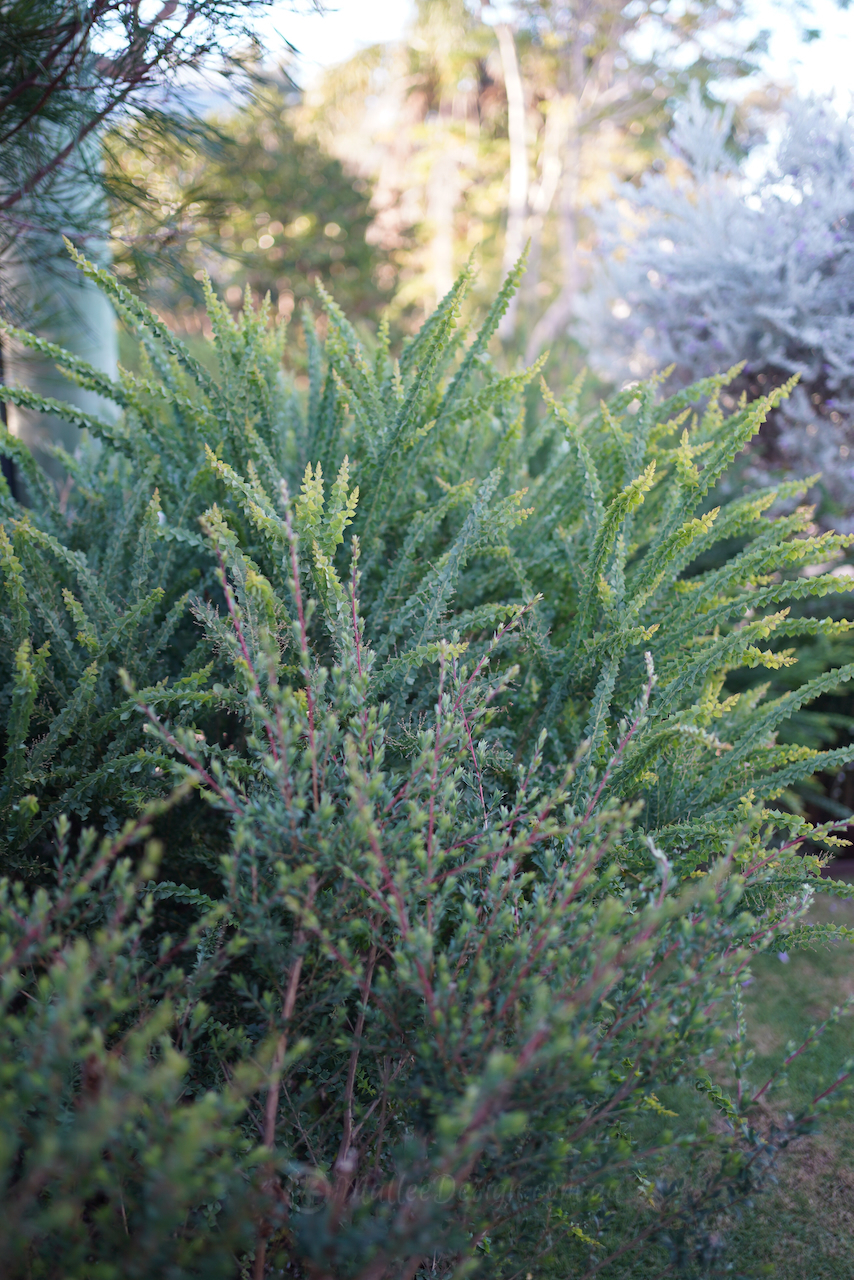
What to Plant for Poorly Drained Soils and temporary inundation
I am adding to this post as here on the East coast of NSW we continue to have flooding, heavy downpours and associated erosion. It has been over 3 years of this tumultuous weather and this particular blog post has been getting quite a lot of visits. The past few years have also given me…
-

Another furry leaved beauty: Lasiopetalum baueri
This is commonly known as Slender Velvet Bush, which is a most apt description of this interesting under-storey shrub. Lasiopetalum baueri has rusty coloured , furry new growth and pretty delicate pink flowers in Winter. The dried flowers are long-lasting and have potential as a cut flower and the attractive foliage lasts for ages in…
-
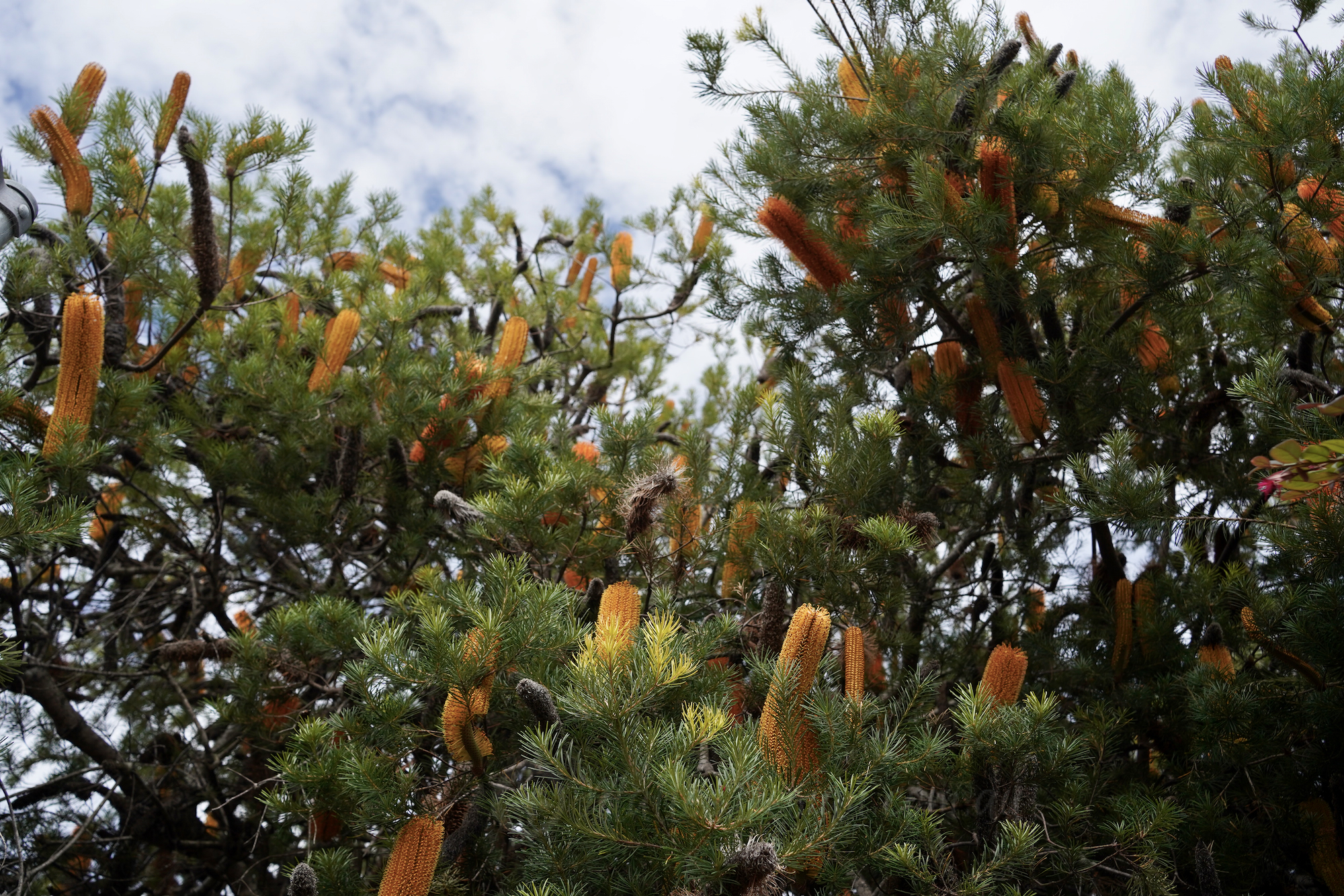
The show stopping: Banksia ‘Giant Candles’
This superb specimen of Banksia ‘Giant Candles’ forced me to drive around the block a couple of times before I could find a park and give it the photo shoot it deserves. This extra large shrub or, as I prefer to call it, small tree is a cross between Banksia ericifolia and Banksia spinulosa. Somehow…
-

A spikey, perfumed tangle of Grevillea flexuosa
This is a wonderfully messy Grevillea that likes to sprawl all over the place. Its stems literally get tangled in themselves and the leaves are stiff and spikey so they can almost grab onto other plants to hoist themselves towards the sunlight and as its name implies it is so very flexible 😉 Grevillea flexuosa…
-
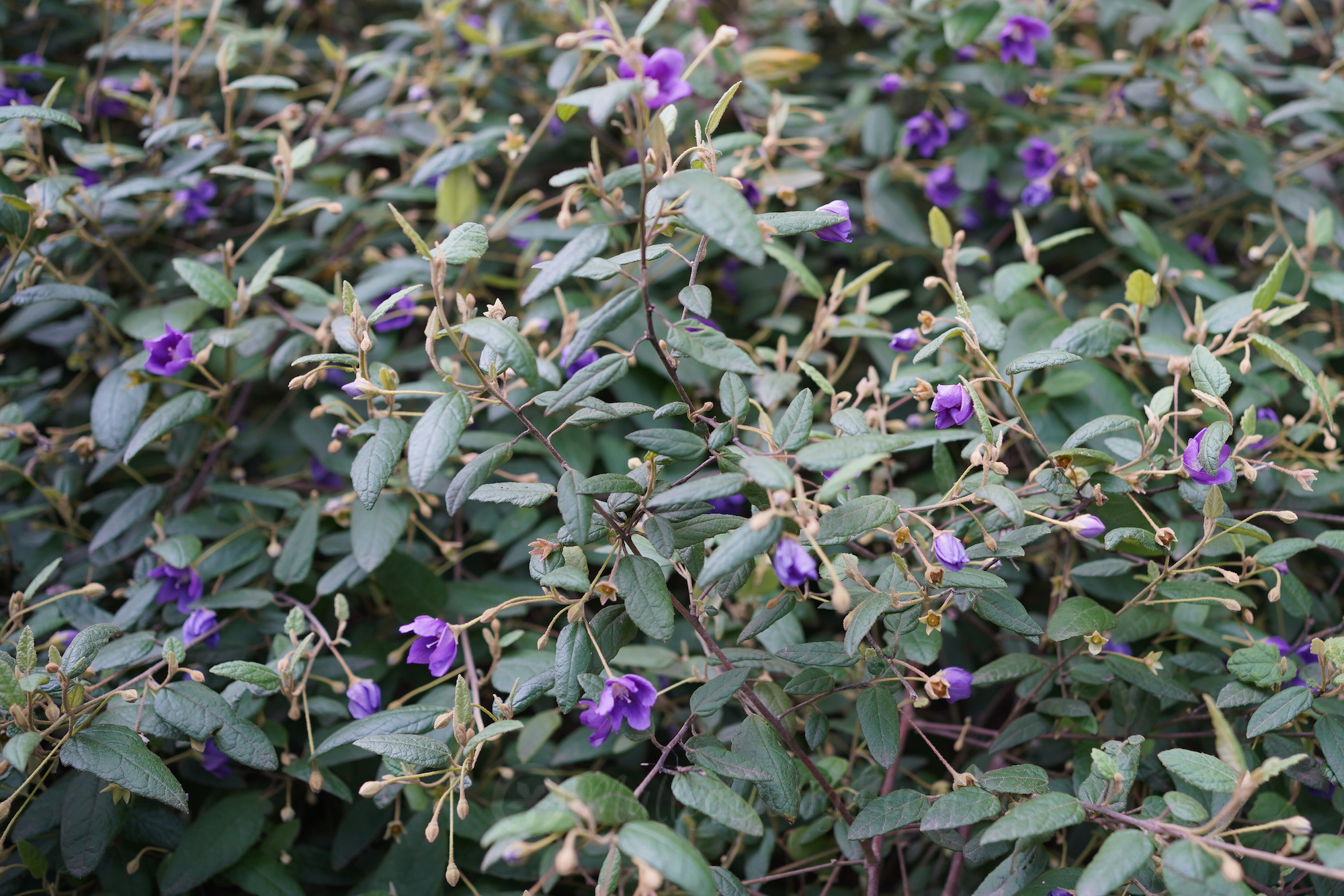
One of a kind: Howittia trilocularis
I discovered this unusual large native shrub in Cranbourne Botanical Gardens on my visit last year. I have never heard of it before but it instantly struck me with its deep purple flowers and small hairy leaves. It was planted as an understorey back drop shrub in one of the garden beds under the canopy…
-
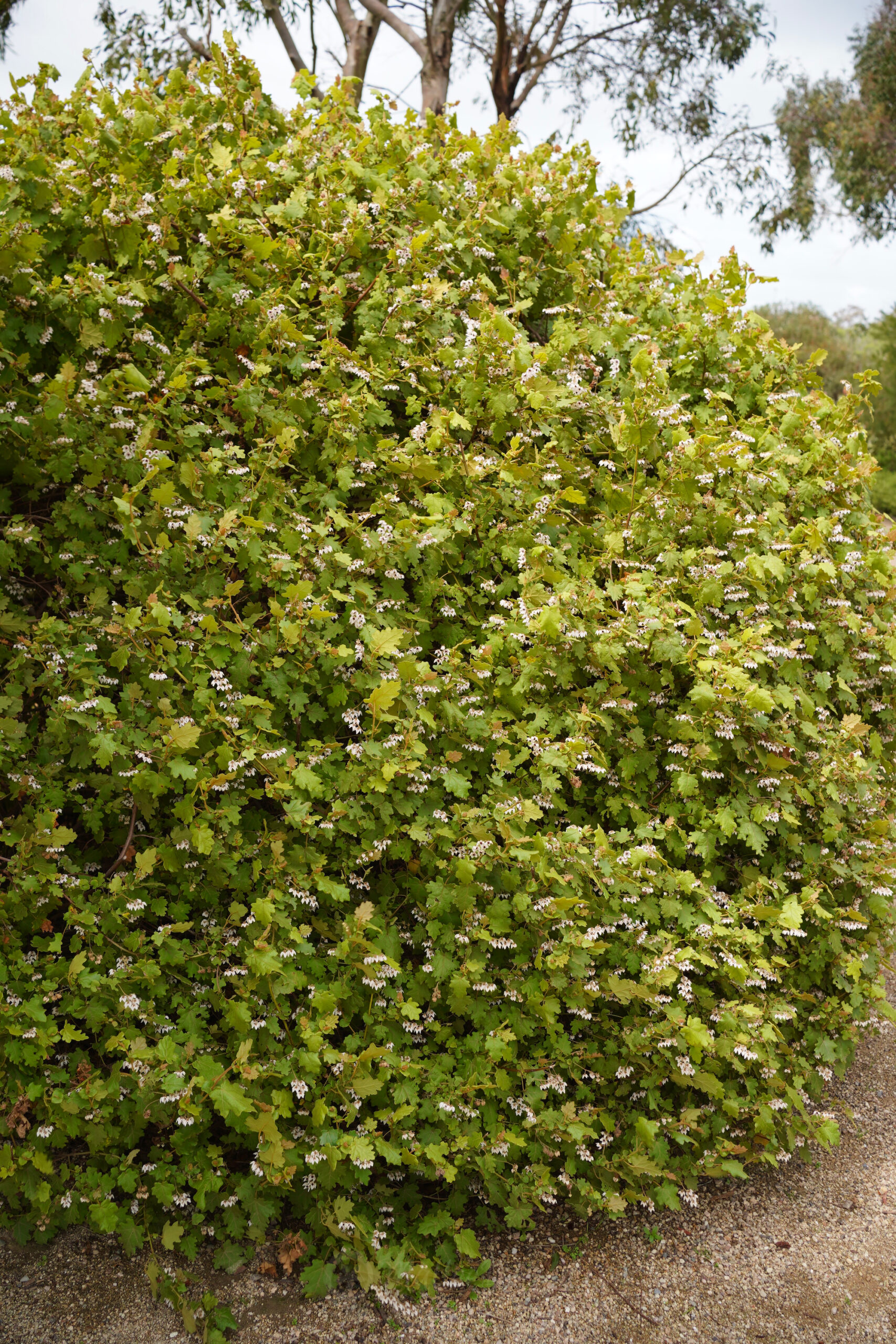
The limitless potential of Thomasia solanacea
I have written about this genus before but thought this species needs its own space on the blog as it really is an extremely versatile medium shrub. It is one of those plants for a trickier spot in the garden as it loves a dry shady position. It is endemic to south-west WA, it is…
-
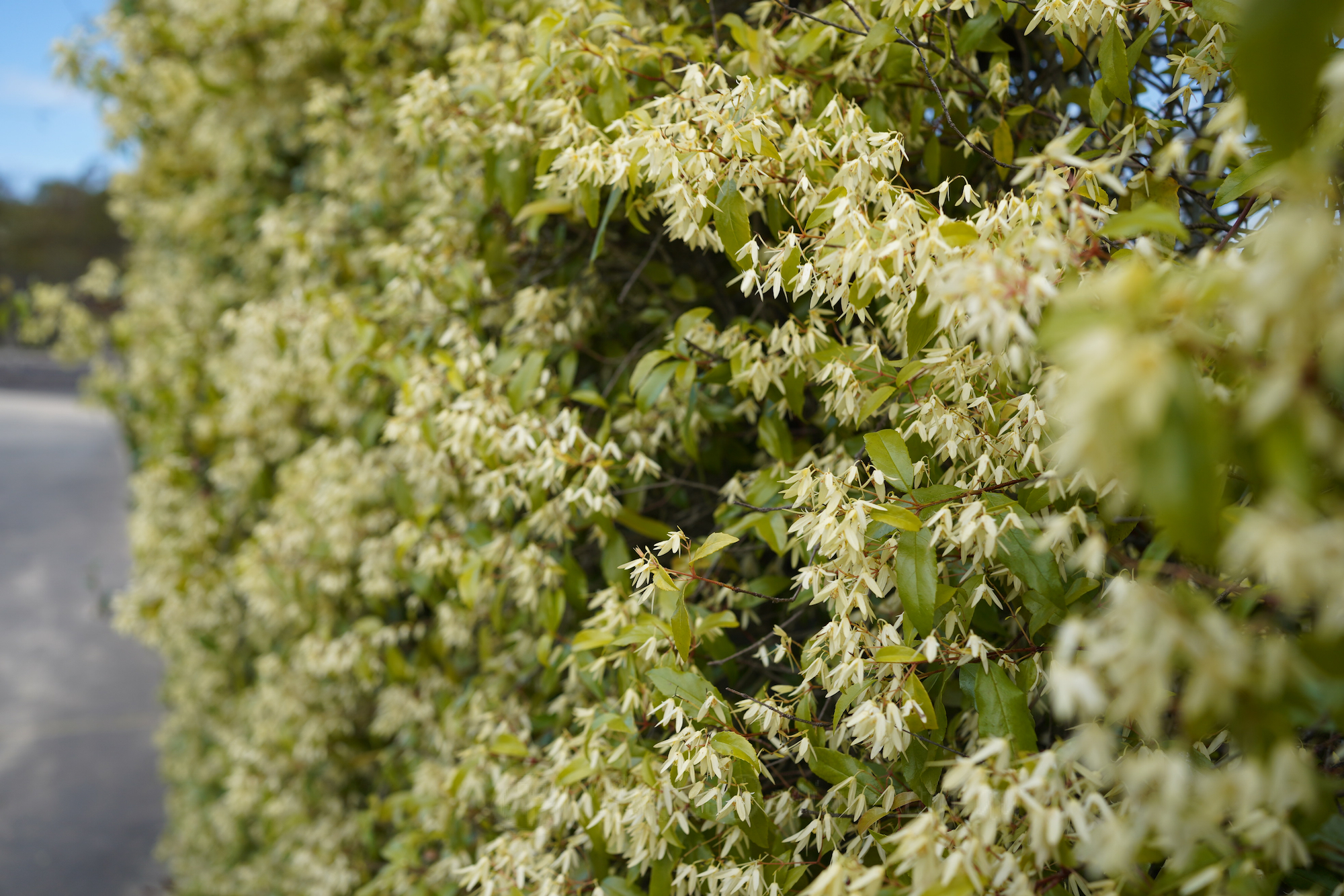
The perfect concealer: Aphanopetalum resinosum
Aphanopetalum resinosum is the answer to many difficult positions in the garden, from dark shady dry corners of the garden to ugly fences or buildings which need to be greened up, Gum Vine may be the solution. This robust native vine has bright green shiny leaves and reddish stems and when it is in flower…
-
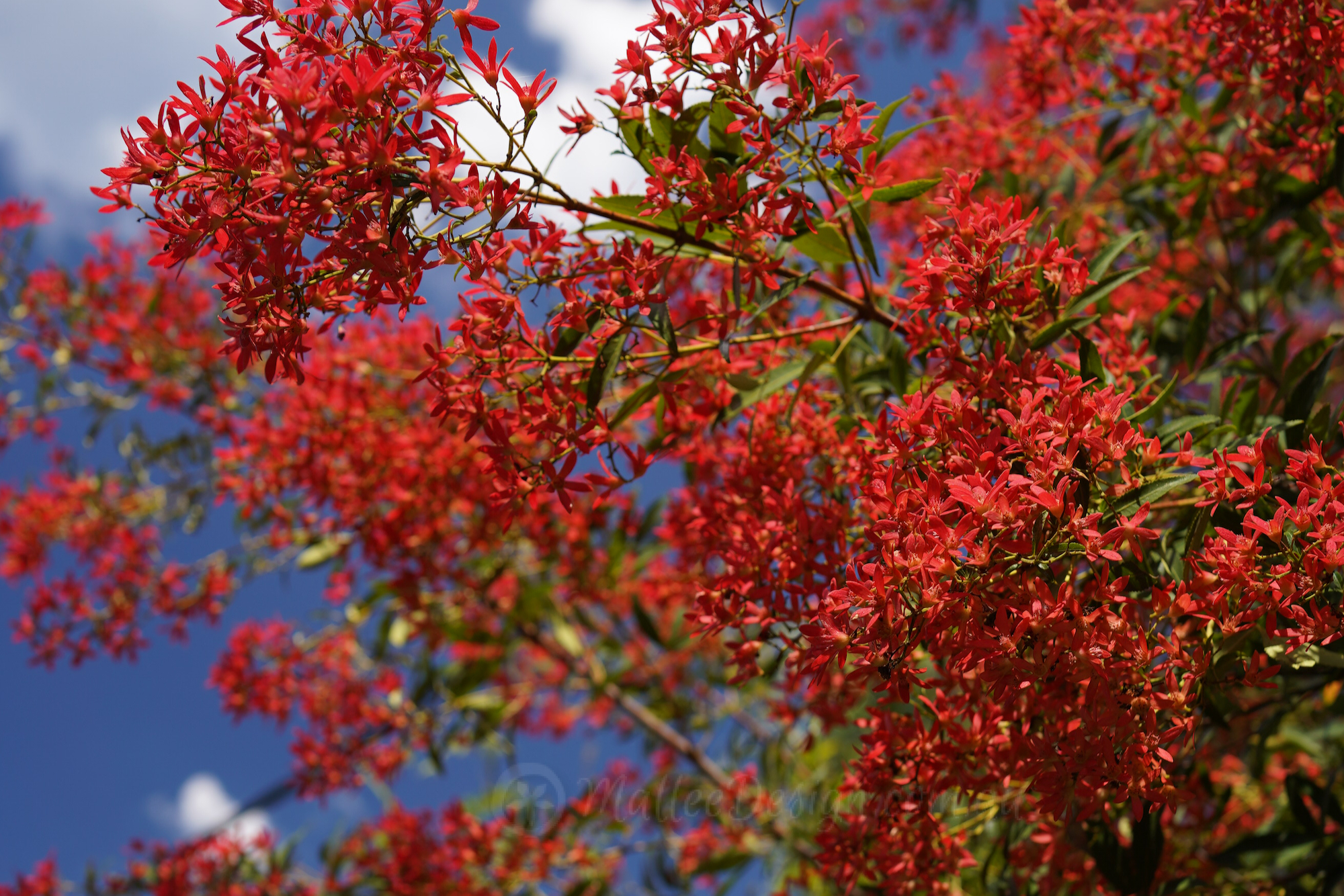
Merry NSW Christmas Bush: Ceratopetalum gummiferum
I am a bit of a Grinch when it comes to Christmas and often one of the things which pulls me our of my un-festive slump is our Ceratopetalum gummiferum or native Christmas Bush. This year I was a little late, as many have finished thier show by the time Christmas actually arrives. However, I…
-
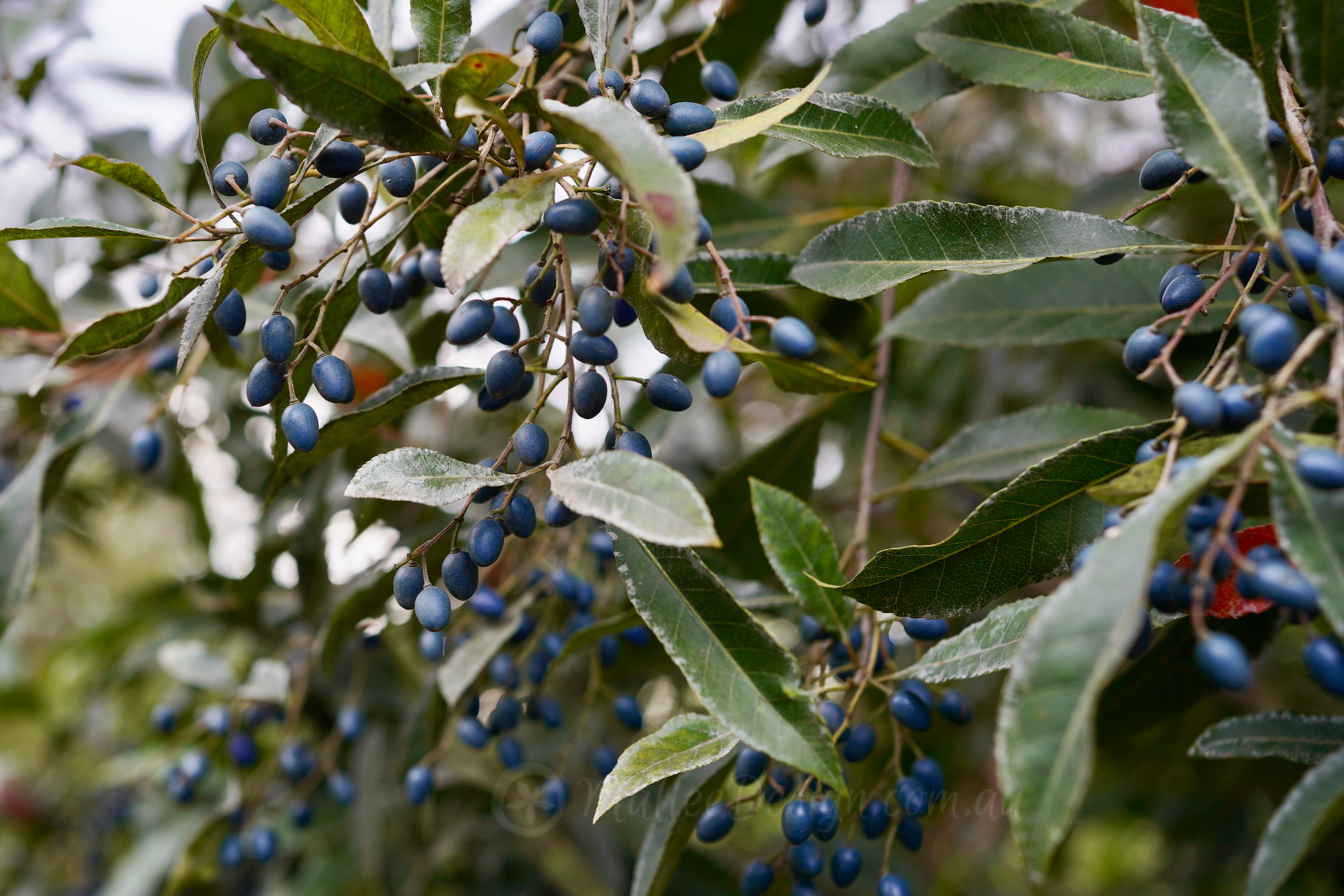
White or Pink? How do you like your Blueberry Ash? or covered in blue berries
Elaeocarpus reticulatus is one of the Spring flowering native tree species which really knocks itself out during its flowering season. It consistently covers itself in the little white fairy skirt like flowers to the point that it gives the whole tree a light hue. The other time of year this species looks incredible is when…
-
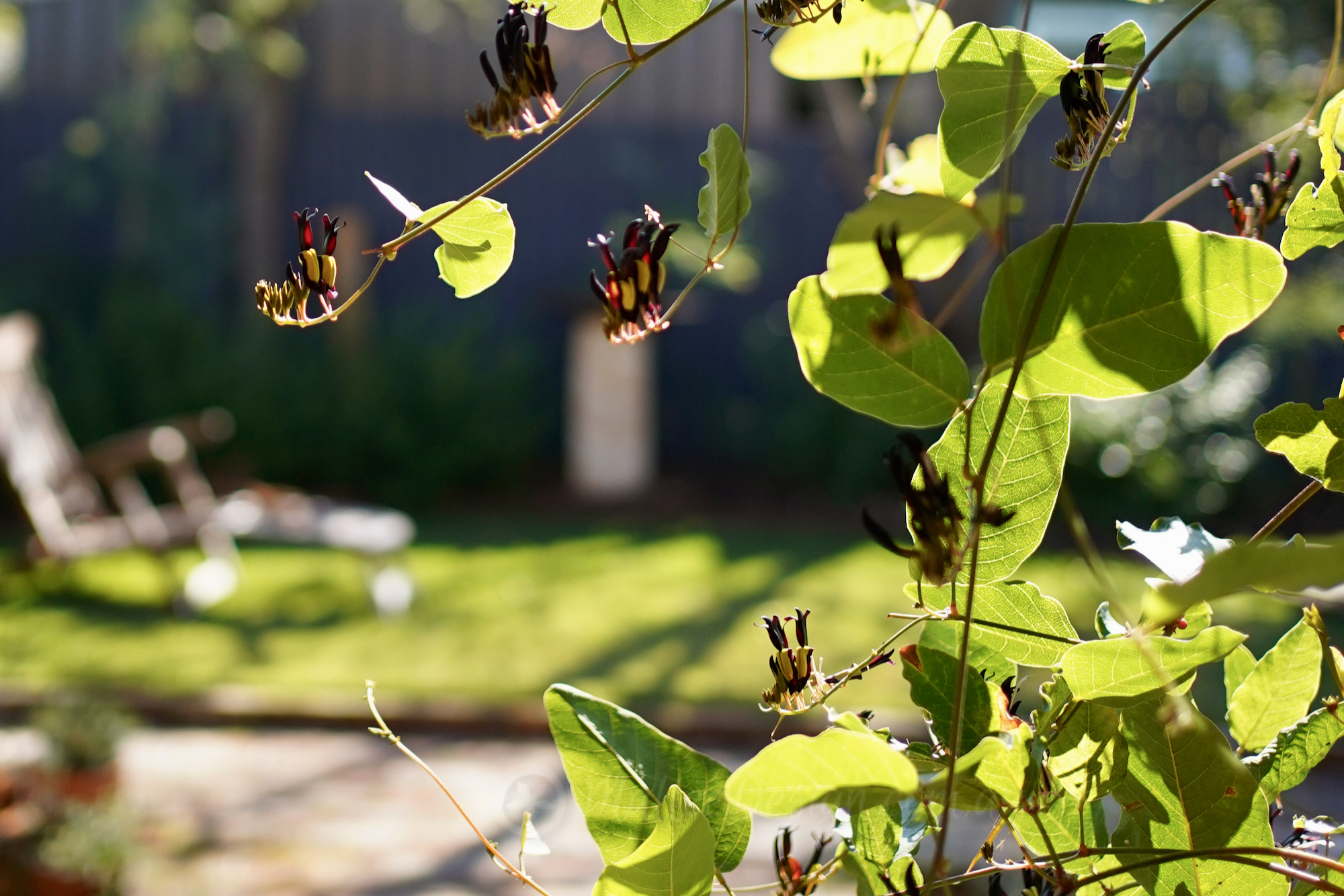
Eye catching Kennedia nigricans
Kennedia nigricans is an unusual climber which tends to draw in everyones attention. I use this Western Australian species whenever I need a quick growing cover to screen, suppress weeds or create shade. The large bright green leaves are broad for a Kennedia and the pea flowers hide a little amongst the foliage, but once…
-

Powerful medicinal tree: Pittosporum angustifolium
This is a small native Medicine plant affectionately known as Gumbi Gumbi, it actually has many names as it has many uses. It is also known as Western Pittosporum, Berrigan, Bitter Bush, Cattle Bush, Cheesewood, Butter Bush, Native Willow or Native Apricot. The properties of Gumbi Gumbi are quite potent and only those familiar with…
-
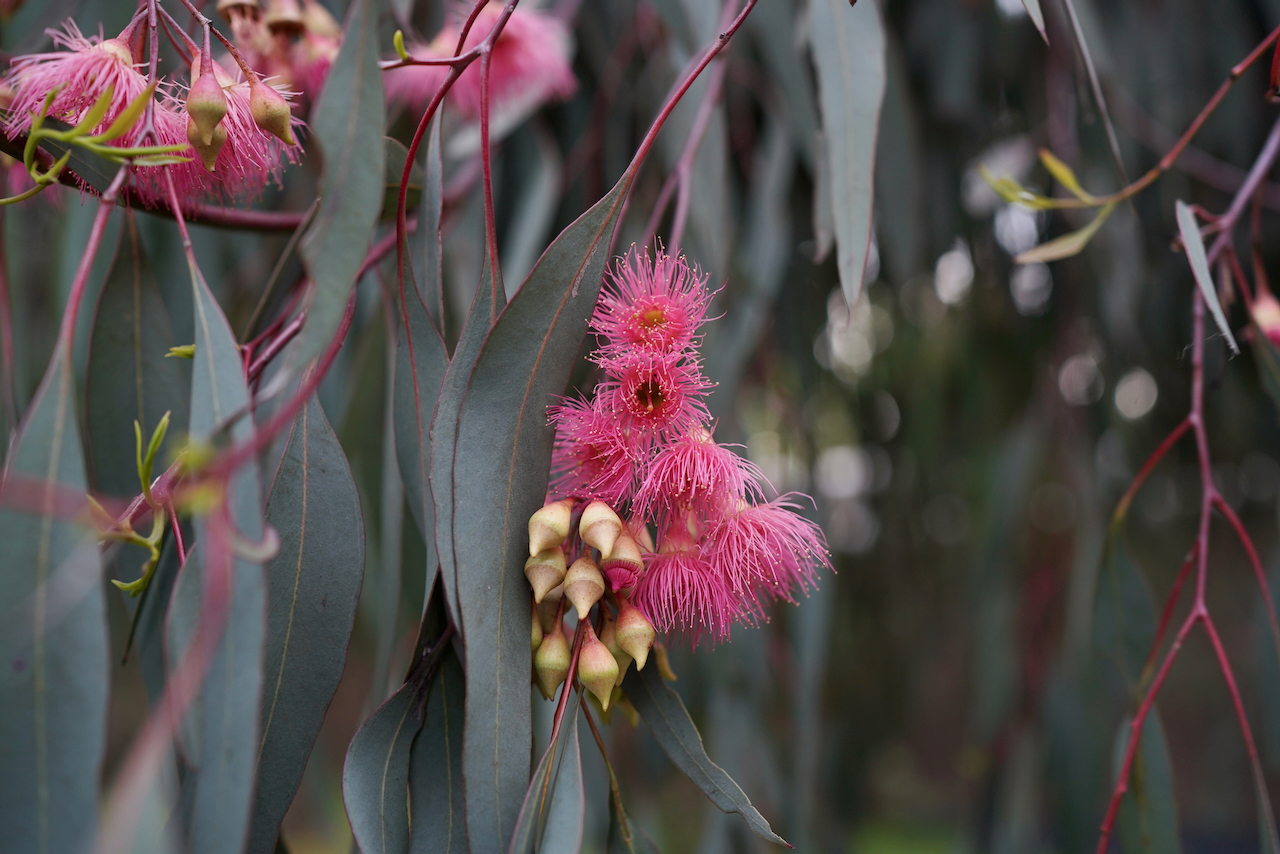
‘Red Iron Bark’ – Eucalyptus sideroxylon Rosea
I live in Iron Bark territory, on a clay soil, near the coast, the local Iron Barks stand up to the strong coastal winds and often boggy soil. One introduced Iron bark that does very well in my area is Eucalyptus sideroxylon Rosea, this is a stunning medium sized tree, that I gladly recommend for…
-

The unique Viminaria juncea
There aren’t many plants which you could get this species confused with, especially when it is in full flower. Viminaria juncea is a stand out feature shrub or small tree which is quite common in our bushland but not so often seen in cultivation. Shrub to 5mts tall The yellow pea flowers located on long,…
-
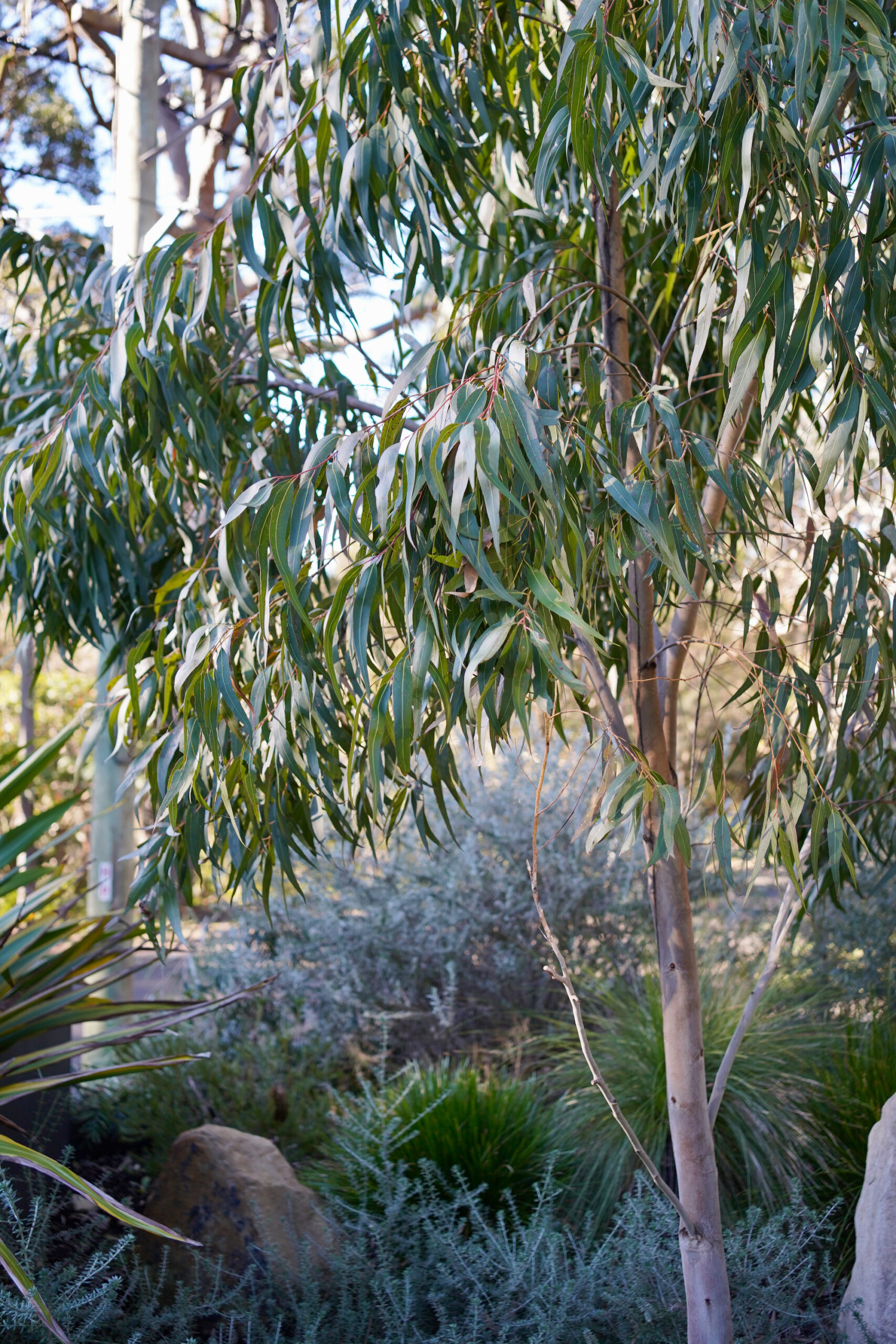
Dwarf Eucalyptus for small gardens: Eucalyptus citriodora DWARF
The lemon scented gum is one of my favourite fragrances, that pungent citronella smell released after the rain or at dusk on a summer evening makes me feel all sentimental about our incredible flora.Unfortunately Eucalyptus or Corymbia citriodora doesn’t mix so well with the urban landscape, firstly they get tall, very tall and secondly as…
Category: Screening plants

